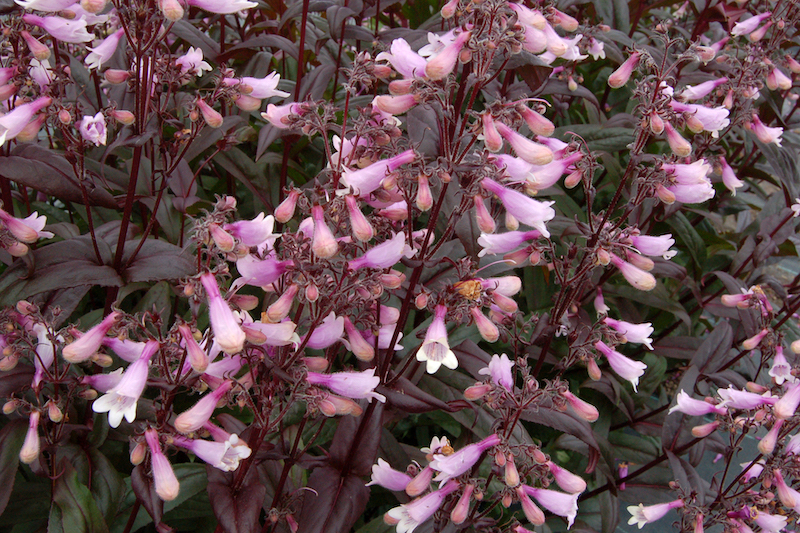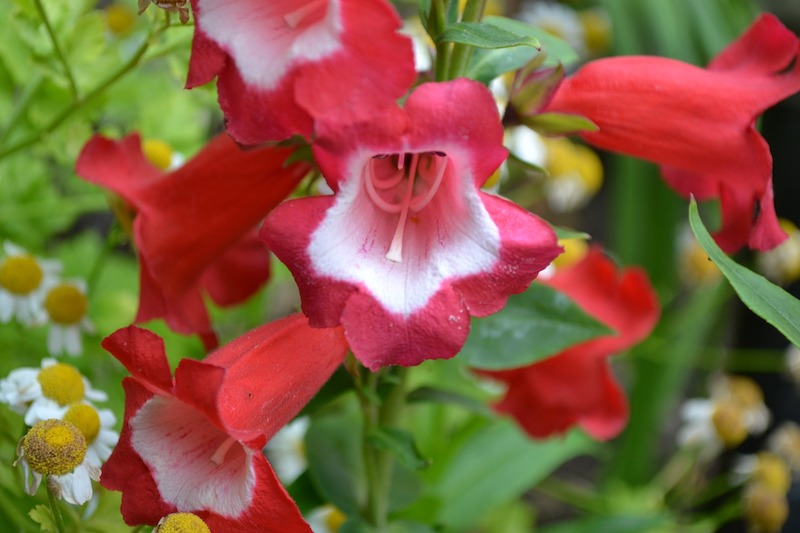Growing Beardtongue
Beardtongue, Beardtongue spp., is a North American native which is easy to grow and requires little maintenance after it is established in your garden. The native growing area ranges from Alaska to Central America, encompassing many climates and soil conditions. The tall flower spikes resemble other plants in the genus such as Foxglove and Snapdragons, although Beardtongue is more suited to a hotter and drier climate.
Beardtongue is virtually pest- and disease-free and is one of the hardest-working perennials to attract beneficial insects. The flowers are long-lasting on the plant and as cut flowers for arranging.

Planting Beardtongue
Beardtongue prefers well-draining soil with moderate fertility and an acidic to neutral pH. Native plants, such as Beardtongue, rarely require soil amendments when initially planted. Only amend the soil with organic compost and grit if the drainage is poor. Choose a location that has full to part sun to help Beardtongue bloom profusely. Beardtongue cannot compete with grass or weeds, so be sure to mulch the root zone with 2-3 inches of finely shredded arborist chips, leaves, or compost.
Watering Beardtongue
Beardtongue requires supplemental watering only until it establishes a good root system. At planting and for the first growing season, allow for 1 inch of water per week. This includes any natural rainfall if you garden in an area that has heavy summer rains. Watering with soaker hoses or drip irrigation lines will help to keep the foliage dry and less susceptible to mildew and fungal diseases. Supplemental watering in following years is generally only necessary during long periods of dry or hot weather.
Fertilizing Beardtongue
Beardtongue does not require heavy fertilizing. Mulching with compost or shredded leaves in the fall will improve soil fertility slowly over time, allowing the plant to receive a low level of nutrients. Using fertilizers for blooming plants will not encourage heavier blooming for this native and can stress and weaken its growth over time.

Pruning Beardtongue
Beardtongues will reward you with a long blooming period if they are regularly deadheaded and may even give a second flush of blooms after being cut back in mid-summer. Cut back the whole plant by one-third its height after the first flush of blooms is mostly finished. The second blooming may not be as heavy, but the cutting back also encourages a bushy shape and prevents flopping. Fall or late winter clean-up of the top growth helps reduce overwintering pests and diseases and prepares the plant for vigorous regrowth in the spring.
Caring For Beardtongue in Pots
Including Beardtongue in a container garden is a brilliant way to attract more pollinators to your garden no matter its size. This perennial will happily live its whole life in a container as long as it gets regular watering and excellent drainage. Fertilizing will need to be done more often since watering leaches nutrients from the potting mix over time. An all-purpose, balanced fertilizer used at half the strength recommended by the manufacturer can be used early in the spring as new growth emerges. A second feeding after blooming can be applied if the plant seems to need a bit of a boost.
Winter Care For Beardtongue
Beardtongue is a hardy herbaceous perennial that is suited for USDA zones 3-8. Gardeners in colder zones may want to cut the spent top growth back in the fall and apply a thick mulch of shredded leaves, arborist chips, or organic compost near the growth crown. Gardeners in the warmer growing zones from 6-8 can leave the top growth over the winter and do a clean-up as new growth emerges in the spring. Beardtongue growing in pots over the winter requires excellent drainage so that root rot does not take hold. If the container is not too large to move, relocate it to a more protected location out of the path of prevailing winter winds and storms.
 |
Author Robbin Small - Published 5-09-2023 |
